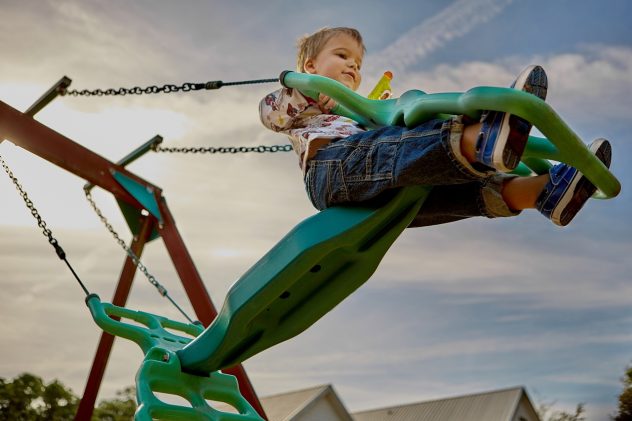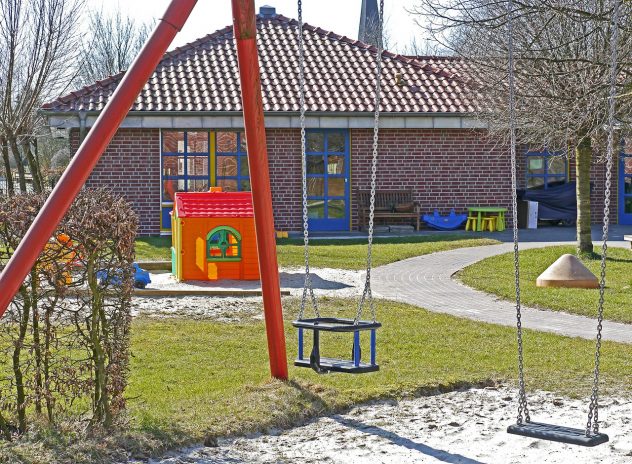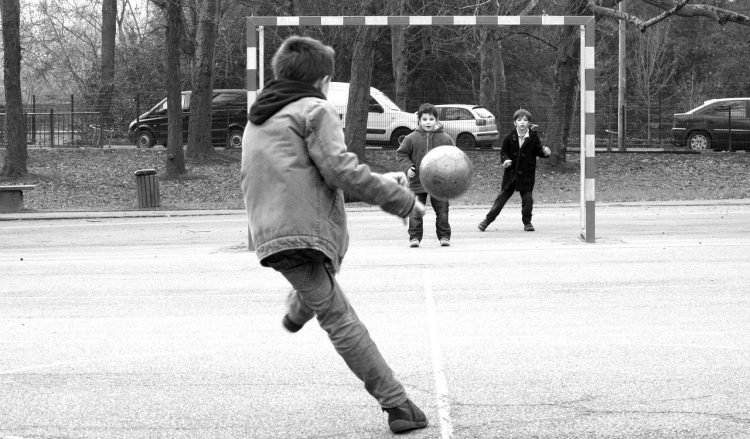Education is always evolving. Teaching strategies, curriculums, and assessment methods are often re-evaluated for all grade levels. In particular, early childhood education goals have been discussed on a seemingly ongoing basis. As a result, movements have emerged that encourage reading in kindergarten plus other instructional standards that used to apply to older elementary students.
As educators strive to keep pace with the modern, more stringent learning goals of elementary students, it’s probably unavoidable that kids in the young elementary grades spend less time at recess and more time in a teacher/student lecture format.
And one question keeps popping up. Are elementary school students spending enough time just playing?
Many experts feel the answer is no. Unfortunately, current practices within elementary schools often result in decreased amounts of recess time and unstructured play opportunities. Admittedly, it’s difficult to determine exactly how much play time provides the most benefits to elementary school students.
How, and why, should schools add more play time?
First, it’s helpful to check guidelines. The Centers for Disease Control and Prevention, or CDC, recommends that elementary school students should have at least 20 minutes of recess every day. Increased physical activity is an obvious plus. Other benefits of simply moving around include improvements in memory, attention, and concentration.
And, consider this: When kids engage in unstructured play, they are not just taking advantage of free time. These students are also likely practicing things like inquiry-based learning, social negotiation, and exploration of ideas. Teacher-led instruction is undoubtedly a valuable educational tool, but taking a second look at allowing for adequate play time is a worthwhile consideration.
It turns out that the American Academy of Pediatrics, or AAP, agrees. The AAP delivered their opinion on the topic by publishing a policy statement entitled “The Crucial Role of Recess at School.” In part, the statement seeks to advise people that debate the need for recess at school. Furthermore, the AAP’s statement defends the concept of play at the elementary school level.

In fact, the AAP goes on to urge schools to think of recess as a “necessary break from the rigors of concentrated, academic challenges in the classroom.” Not only do students need a break from typical academic activities, the AAP additionally advises that “safe and well-supervised recess offers cognitive, social, emotional, and physical benefits that may not be fully appreciated.”
Education experts have also started to weigh in on the benefits of early emphasis on core academic subjects, and some have even questioned whether there are any. The main concern seems to be that elementary school students are exposed to less and less unstructured play time at school.
Education Week recently published an article comparing a U.S. first grader’s school day with that of a Finnish first grader. Why Finland? Interestingly, Finland’s approach to the elementary school day has received attention in recent years because the amount of play time often exceeds normal U.S. recess times. For example, Education Week reported that a first grade student in the United States attends school 35 hours a week, seven hours per day. A first grader in Finland spends 22.5 hours a week in school, or 4.5 hours a day. Incredibly, three hours each day are spent on content in the Finnish classroom, and the other 1.5 hours are spent on recess or “unstructured outdoor play.”
When looking at the differences in the hours spent at school for the first graders in these two countries, the aim is not to criticize. Rather, the purpose is to consider the Finnish way of allowing for a large amount of recess time.
Why are students not receiving more play time?
Obviously, the reasons for a trending decrease in recess time are numerous and vary according to many factors that are not easily summarized, like differing socio-economic conditions, staffing, and many other realities. However, generally speaking, the following common barriers may be contributing to a decline in elementary school play time:
- Growing emphasis on traditional lecture-based instruction.
- Increased push to have young elementary school students become proficient in subjects like reading and math at an early age.
- Overcrowding at school which results in large numbers of kids having to be quickly cycled through playgrounds each day.
- Instituting practices that aim to replace free play time with increased time in structured physical education classes.
- Pressure to prepare for growing numbers of mandatory standardized tests.
Most of the items on the above list may not seem “bad.” In fact, most parents would probably welcome their child’s increased time in a Physical Education (P.E.) class. While P.E. is certainly beneficial, a structured class just doesn’t allow for the academic breaks and the free social time that an unstructured block of time provides. Remember, it’s the unstructured play that allows kids to try out ideas and practice the valuable skill of inquiry-based learning.
 So, even if most U.S. elementary students can’t experience the Finnish way of over an hour of recess time per day, what can educators do to ensure elementary kids receive at least the 20 minutes that are recommended by the CDC?
So, even if most U.S. elementary students can’t experience the Finnish way of over an hour of recess time per day, what can educators do to ensure elementary kids receive at least the 20 minutes that are recommended by the CDC?
One answer might be to try and provide more free time within the classroom. Teachers may find it fairly easy to complement their instruction by applying Waldorf, Reggio or Montessori concepts within the normal school day. Many resources exist online that provide ideas for incorporating opportunities for unstructured play. It’s likely vital to consider this type of strategy, as it may not be as easy as it sounds to just send kids out to a school’s playground more often.
Visit any elementary classroom and it becomes very clear by the shuffling feet, moving chairs, and the flying elbows and hands that kids need to move around. Increasing recess time may be one of the most important things an educator can do to help increase the chance for academic success.
About The Author
Holly Kline has spent the last five years assisting public elementary school teachers, and is currently involved in two public elementary school classrooms. She holds a B. A. in Journalism, and is the blogger for ElementaryEducationDegree.com. Holly enjoys working with educators, and learning about a wide variety of educational policies and strategies.
Sources
Education Week: Give Students Time to Play
American Academy of Pediatrics: The Crucial Role of Recess in School



Very interesting article. I concur wholeheartedly with it.
Thanks for reading Carla! Yes, it is a disturbing trend to see free playtime being reduced or undervalued. I wish older students had more free play time too–it would be a good balance for the media-engagement!